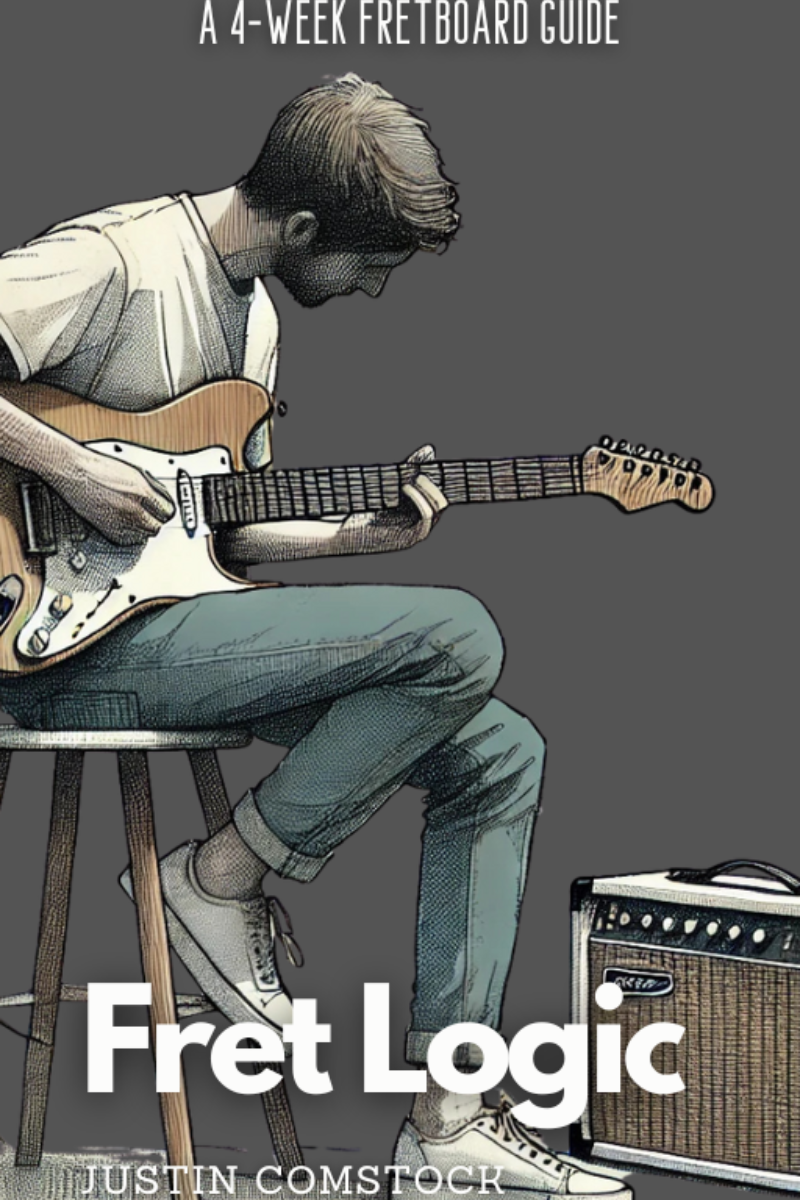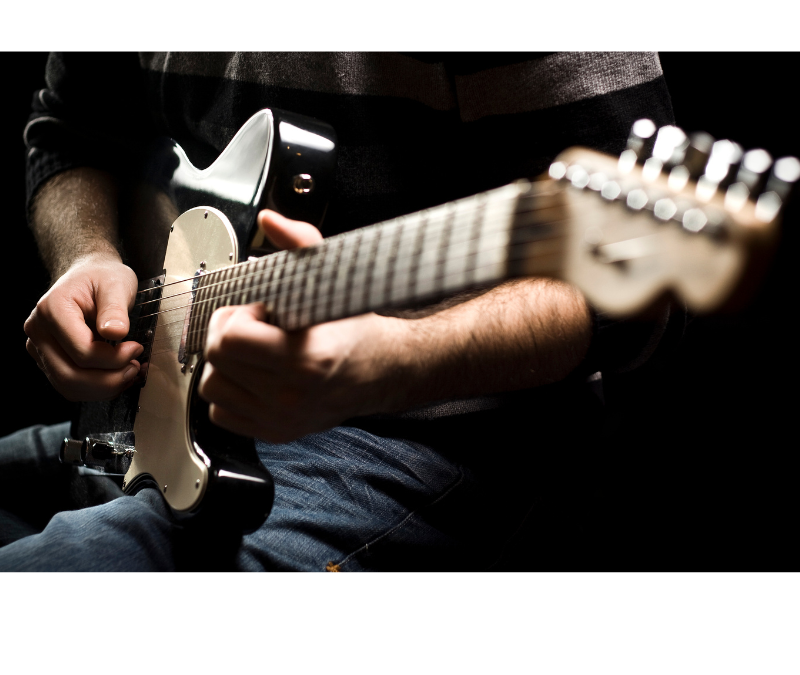“You don’t have to reinvent the fretboard—just learn how to see it.” That’s what I reminded myself the first time I heard B.B. King’s guitar singing on Midnight Believer. When he tore into the solo for “Never Make Your Move Too Soon,” he wasn’t doing anything technically outlandish. He was drawing on one of the most joyful and enduring sounds in modern music: the major pentatonic guitar scale.
If you’ve ever felt stuck noodling the same tired licks, or if your solos seem to lack character, you’re not alone. Many guitarists never move past the minor pentatonic box. And while the minor pentatonic is an essential foundation, the major pentatonic is your shortcut to sounding instantly more melodic, more musical, and—let’s be honest—more professional.
Today, I’ll show you:
- What the major pentatonic scale really is
- Why it works so well in rock, blues, country, and pop
- The best fretboard patterns to unlock every key
- Techniques for bringing your phrasing to life
- How to mix it seamlessly with the minor pentatonic for maximum impact
And if you’re serious about transforming your guitar playing, I’ll also share how you can master all 60 pentatonic shapes in every key using FretDeck™—and join a private community of guitarists who are doing exactly that.

❌ Stop Guessing. Start Shredding.
If you’re still fumbling through scale patterns and box shapes… it’s costing you progress.
FretDeck™ is the no-fluff system that shows you exactly how to master the fretboard—fast. Early access.
⚡️ This isn’t for dabblers. It’s for players who want results.
👉 Click here to join the pre-launch now
Early access. Limited rewards. Don’t wait.
What Is the Major Pentatonic Guitar Scale?
Let’s keep it simple:
Major Pentatonic Scale Formula:
1 – 2 – 3 – 5 – 6
Five notes. No clutter. No unnecessary tension. Just pure, clean melody.
In the key of C major, that means:
- C (1)
- D (2)
- E (3)
- G (5)
- A (6)
Notice what’s not in there? The 4th and the 7th degrees. By removing those intervals, the major pentatonic scale sidesteps dissonance and delivers a sound that’s open, uplifting, and timeless.
It’s no accident this scale shows up everywhere—from Sweet Child O’ Mine to Stairway to Heaven. It’s built to be singable. That’s why it resonates with listeners across genres.
Why Major Pentatonic Guitar is Different
Some scales have a lot of tension. The major pentatonic doesn’t.
That’s why:
- Blues players lean on it for sweet, melodic contrast.
- Country pickers use it for bright, major-key leads.
- Rock guitarists blend it with the minor pentatonic to craft iconic solos.
Imagine you’re jamming over a G major chord progression. You could play G major scale, but if you stick to the major pentatonic (G, A, B, D, E), you get all the color and lift without cluttering the melody.
Key benefits:
- Easy to memorize (just 5 notes).
- Avoids harsh clashes.
- Perfect for major-key progressions.
- Instantly recognizable “happy” sound.
If you’re learning scales for the first time, this is the friendliest way to dip your toes in.
How It Connects to the Minor Pentatonic
Here’s something most guitar books gloss over:
Every major pentatonic scale is also a minor pentatonic starting on a different note.
For example:
- C major pentatonic = C D E G A
- A minor pentatonic = A C D E G
Same notes—different tonal center.
When you internalize this, you unlock one of the most powerful tools in your playing: the ability to pivot between major and minor colors on demand.
This is why B.B. King could shift from a mournful wail to a hopeful melody without changing position. He understood that the scales overlapped. And you can too.
Major Pentatonic Guitar Scale Patterns
Let’s talk shapes.
If you only learn one pattern, start with this essential “box shape”:
Key of G Major Pentatonic (root on 6th string):
E |------------------------|
B |------------------------|
G |-----------4-5----------|
D |-------4-5--------------|
A |---2-5------------------|
E |-3----------------------|
Notes: G, A, B, D, E
This pattern is comfortable under your fingers and connects easily to adjacent positions.
But don’t stop there. To own the neck, learn the 5 interconnected positions. Here’s why:
- Each position covers a different melodic range.
- You can shift smoothly across octaves.
- You’ll never get lost mid-solo.
Pro Tip:
The FretDeck™ system has all 60 pentatonic shapes (5 positions x 12 keys) laid out on easy-reference cards. No more guessing. No more flipping through books.
If you want to see all patterns in a clear, step-by-step system, grab your deck here.
Techniques for Bringing Major Pentatonic Guitar to Life
Playing the scale note-for-note is just the start. Here are three proven ways to turn these shapes into music that moves people.
1. Add Bends and Vibrato
No one wants to hear a robot play scales.
- Bends: Target the next note in the scale. For example, bend the A on the G string (7th fret) up to B.
- Vibrato: Hold a note and wiggle it with your fretting hand to create sustain and emotion.
When you watch players like Derek Trucks or Eric Clapton, their phrasing is drenched in bends and vibrato. That’s how they sound so human.
Action Challenge:
Pick one position of the major pentatonic scale and add bends on every string. Then add vibrato to every sustained note.
2. Blend Major and Minor Pentatonic
Want your solos to feel more dimensional?
Try this:
- Play a phrase in major pentatonic.
- Answer it with a phrase in minor pentatonic (same root note).
This call-and-response creates tension and release, giving your lead lines depth.
Example in A:
- Major: A, B, C#, E, F#
- Minor: A, C, D, E, G
Experiment by sliding between them. You’ll hear instantly how this unlocks bluesy richness.
3. Use Double Stops
Double stops (two notes played together) make your playing fuller.
In the upper strings of the major pentatonic scale, you’ll find beautiful intervals—thirds and sixths—that sound sweet and confident.
Try this in G major pentatonic:
E |-3---5--|
B |-3---5--|
Play both strings together and let them ring. This is pure country and Americana gold.
How to Practice Major Pentatonic Guitar Scales
Practicing scales doesn’t have to be boring. Here’s a 5-step routine you can do daily:
- Warm Up: Play the box pattern slowly with a metronome.
- Speed Drills: Gradually increase tempo.
- Position Shifts: Practice moving between positions up the neck.
- Phrasing Practice: Create short licks incorporating bends and slides.
- Backing Tracks: Improvise over major chord progressions.
Pro Tip:
Record yourself. When you listen back, you’ll hear what’s working and what needs polish.
Famous Solos That Use Major Pentatonic Guitar
If you need proof this scale is the backbone of great music, study these classics:
- Eric Clapton – “Wonderful Tonight”
- Lynyrd Skynyrd – “Sweet Home Alabama”
- Guns N’ Roses – “Sweet Child O’ Mine”
- B.B. King – “Never Make Your Move Too Soon”
- The Allman Brothers Band – “Ramblin’ Man”
Notice how these solos have a melodic, singable quality? That’s the major pentatonic working its magic.
Take the Next Step: Master the Fretboard
You don’t need to memorize all this alone.
FretDeck™ makes it effortless to:
✅ Visualize every major pentatonic shape
✅ Connect the patterns in every key
✅ Practice with backing tracks
✅ Learn faster than you ever thought possible
Thousands of guitarists have already discovered how FretDeck™ helps them escape the “noodling trap” and start playing meaningful solos.
🎯 Ready to finally see the fretboard clearly?
Back the FretDeck Kickstarter today and get lifetime access to our private Discord community, where you can share your progress and get real feedback.

❌ Stop Guessing. Start Shredding.
If you’re still fumbling through scale patterns and box shapes… it’s costing you progress.
FretDeck™ is the no-fluff system that shows you exactly how to master the fretboard—fast. Early access.
⚡️ This isn’t for dabblers. It’s for players who want results.
👉 Click here to join the pre-launch now
Early access. Limited rewards. Don’t wait.
Final Thoughts
The major pentatonic guitar scale is more than a pattern—it’s a mindset. It’s how you shift from random notes to intentional melody. From mechanical runs to music that matters.
If you commit to learning these shapes, blending them with the minor pentatonic, and developing your phrasing, you’ll open up a new world of expression.
Remember:
You don’t need magic fingers—you need a system.
And that’s exactly what FretDeck™ was built to give you.
See you inside the community.
Internal Link
👉 Related Guide: Unlocking Guitar Fretboard Notes: Your Ultimate Map
Ready to transform your playing?
🔥 Claim your FretDeck and join the Discord today.

Join Guitar Freaks Hangout on Discord! 🎸
Get Fret Logic FREE!
Join the Guitar Freaks Hangout Discord and get exclusive access to my entire e-book, Fret Logic! Master the fretboard and elevate your solos with this comprehensive guide.
👉 Don’t miss out—join now and download your free copy!










